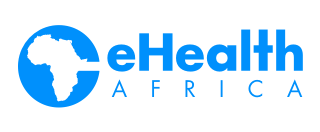On May 9th, the World Health Organization (WHO) formally launched the GIS Centre for Health. The center will manage the production and use of geospatial data and geographic information systems (GIS) towards strengthening public health interventions. Before now, WHO programs and units ran their health data independently. The center will now ensure a dedicated approach to producing and using essential GIS data through the various projects implemented at the center. In addition, it will drive capacity building, partnerships, and collaboration, expansion of GIS infrastructure, and deepening of the geospatial culture within the WHO.
Cross-section of WHO GHFD staff and the GHFD implementing partners (IPs) during the GIS Centre launch in Geneva
eHealth Africa (eHA) participated in this event as a key implementing partner on the Global Health Facility Database (GHFD) project. The GHFD project is one of the projects managed by the GIS Centre. It is also a crucial proof of concept on the value of a center with responsibilities to drive geospatial data generation and usage. The open-access Snakebite and Envenoming Platform is another initiative that leverages support from the GIS Centre, using the latest ArcGIS software. The platform addresses the lack of antivenom in vulnerable communities and improves available information about local snakebite risks.
Screenshot of the Snakebite GIS story map
The database operates as a global reference for anti-venom and snakebite health information. It was established in September 2021 and currently provides snakebite data, risk, nearest health facility for anti-venom etc. The solution is now being expanded to seven countries in East and West Africa, where priority health facilities will be analyzed for accessibility and anti-venom stockpiling. With a GIS-based web mapping, venomous snakes, their distribution ranges, venoms, anti-venoms, and manufacturers of anti-venoms with be available at the click of the button. In the next phase, the database will include data on health facilities and drive time relative to the victim's location. Anyone with internet access can access the platform for information and contribute photos and data to update snake habitats, ranges, and behavior.
The GIS Centre launch was also a gathering of key stakeholders in the GIS, public health, and humanitarian space who identify with the increasing value of geographic information systems (GIS) and the various use cases that will benefit their efforts beyond public health. In addition, we discussed support functions such as data collection tools, GIS usage case studies from the WHO Africa Regional Office, and new GIS features on open data collection kits.
The GIS Centre will leverage WHO's historical experience and knowledge in deploying GIS capabilities in driving public health delivery. Some of these are seen in the distribution of COVID-19, the polio eradication campaign, and the deployment of geospatial maps to support malaria programming.
eHealth Africa is excited at the prospects of deepening its GIS capacity by partnering with the WHO GIS Centre for Health. Our extensive experience implementing vaccine tracking systems, mapping hard-to-reach localities, supporting immunization campaigns, and microplanning with geospatial maps and data signposts our commitment to using geospatial technologies in public health practice.


